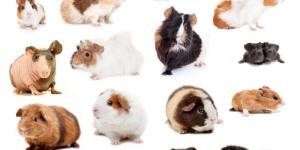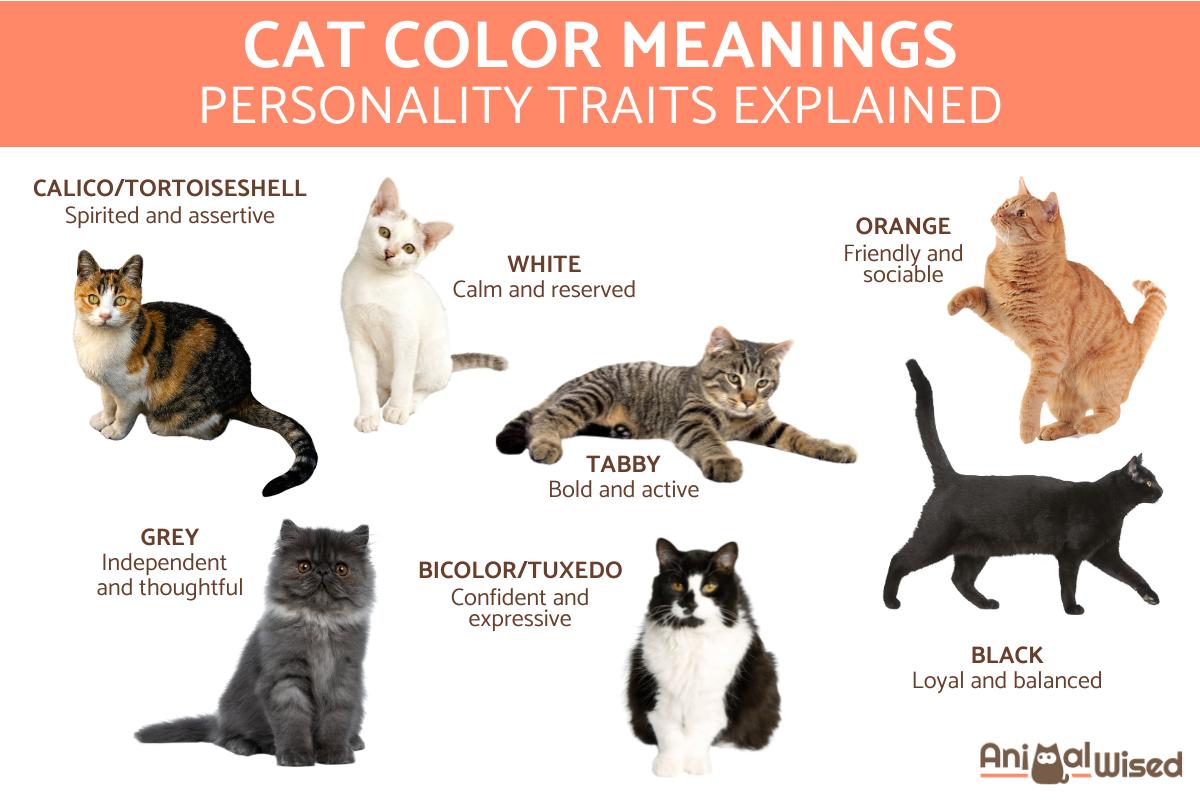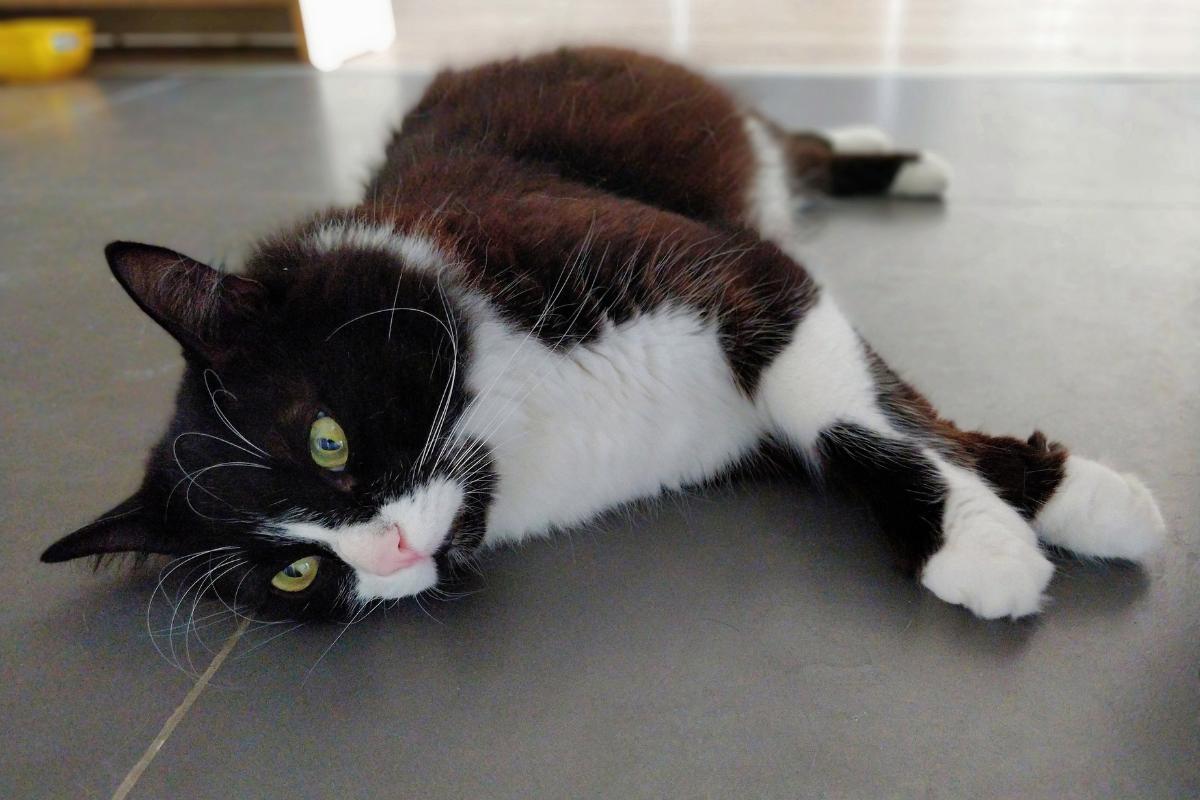What Your Cat’s Color Says About Its Personality

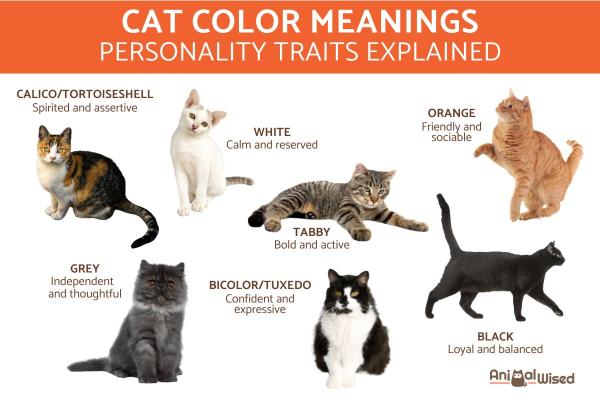
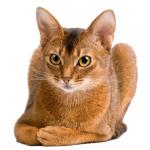
See files for Cats
Ever noticed how your orange tabby seems to be the life of the party while your friend's black cat has that mysterious, independent vibe? You're not alone. Cat owners have long wondered if these personality differences are more than just coincidence. While every cat is unique, mounting evidence suggests your cat's coat color might offer fascinating clues about their temperament.
The following AnimalWised article explores the potential link between a cat's color and its personality.
Does the color of a cat affect personality?
Ancient Egyptians revered black cats as divine beings, and even today, Japanese families consider calico cats to be good luck charms. These beliefs did not just appear randomly, they often reflect observed patterns of real behavior. However, the question remains: is this simply confirmation bias, or is there a deeper connection? Modern science is now beginning to explore the potential genetic links between a cat's coat color and its personality.
Recent studies are shedding light on these age-old observations. While researchers are careful not to assert that color absolutely determines personality, they have found correlations between coat colors and certain behavioral tendencies.
Coat color is just one piece of the complex puzzle that makes up your cat's personality. Other factors such as environment, early experiences, and individual temperament still play significant roles in shaping who your cat becomes.
A multitude of genes work in concert to create your cat's unique appearance. The B gene determines whether the base color is black or brown, while the D gene acts as a color diluter, transforming black into gray or blue and orange into cream. Perhaps the most intriguing is the O gene, located on the X chromosome, which explains why orange cats are typically male and why calico cats are almost always female.
The relationship between coat color and personality is not merely folklore because there is a biological basis for it. The same melanin that gives your cat's fur its color shares developmental pathways with crucial brain chemicals such as dopamine and serotonin, which are the neurotransmitters that influence mood, energy levels, and social behavior.
Scientists refer to this as the melanocortin system, and it affects a range of functions from pigmentation to stress responses. This biological link suggests that the genes controlling your cat's coat might simultaneously influence their brain chemistry. For instance, the genetics behind orange coloration could potentially affect serotonin levels, possibly explaining why many orange cats exhibit particularly friendly and outgoing personalities.
Scientists acknowledge the challenge of distinguishing between actual biological influence and the human tendency to perceive what we expect, known as confirmation bias. However, the growing body of university research indicates that there is more than just superstition underlying these color-personality connections. As research continues, we are gaining a deeper understanding of how genetics shapes both our cats' coats and their personalities.
Black cats
For centuries, black cats have battled unfair superstitions and myths about bringing bad luck or having mysterious personalities. In reality, research shows black cats are among the most affectionate and sociable. Not only that, but solid black cats displayed lower aggression scores than many other color patterns.
Black cats tend to be curious, adaptable, and quick to establish routines in new environments. Many black cat owners report their pets show emotional intelligence, they seem particularly attuned to their humans' moods and often provide comfort during stressful times.
Black cats typically display a wonderful balance of energy and calm. While they enjoy interactive play sessions, they're not usually among the most hyperactive cats. Their energy tends to come in predictable bursts rather than constant motion. With visitors, black cats often show curiosity rather than fear, making them excellent companions for households that entertain frequently.
Did you know that black cats have unique genetic traits that may affect more than just their appearance? Uncover the science and folklore behind these enigmatic house panthers in our other article.
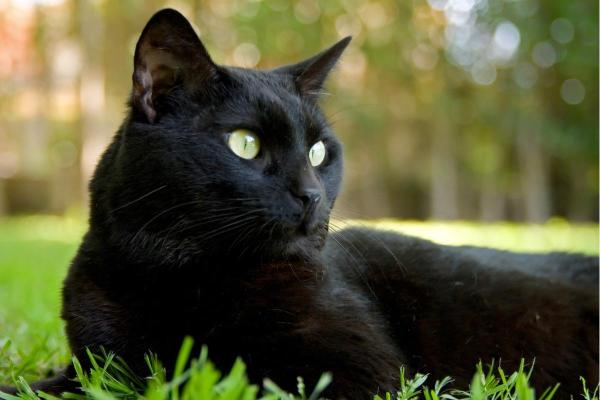
White cats
White cats often show a blend of independence and affection in their behavior. They typically observe their surroundings before choosing to interact directly. This tendency has led some to perceive white cats as aloof, but behaviorists often describe them as selective with their attention.
Typically, white cats form deep bonds with their primary caregiver but can be somewhat cautious around strangers, often needing time to become comfortable with new people. Many white cat owners report that their companions seem to have an almost intuitive understanding of boundaries.
The energy levels of white cats tend to be more calm than highly active. This does not mean they are inactive; rather, they often prefer quality to quantity in their play sessions. Research from feline behaviorists suggests that white cats typically engage in more calculated, strategic play rather than wild bursts of energy. They often excel at environmental enrichment activities that challenge their minds and thrive on predictable routines. Many white cat owners report that their companions enjoy interactive toys that allow for hunting simulation, but may lose interest quickly in overly stimulating environments.
Owners of white cats should be aware of several specific considerations related to their coat color. Many white cats with blue eyes have a genetic predisposition to deafness, which can affect how they interact with their environment. Our other article explores the genetic link between white fur and deafness.
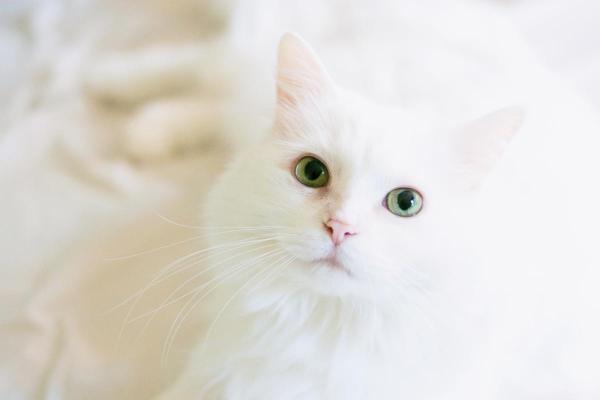
Orange cats
Orange cats have a strong reputation for being the extroverts of the cat world. Several studies consistently rank orange cats (also known as ginger or marmalade cats) as the friendliest color type.
This sociability seems to occur across different breeds, suggesting a link between the genetics of the orange coat color and temperament. Orange cats typically welcome attention from both family members and visitors, showing less of the selective behavior common in other coat colors. Their outgoing nature often makes them excellent therapy cats and companions for households with children or multiple pets.
Orange cats are often highly communicative, using various vocalizations to express their needs and feelings. Also, their curious nature means they are often found exploring every part of their environment, and many owners report their orange companions develop interesting habits like retrieving toys or learning to open cabinets
Regarding energy levels, orange cats typically maintain a playful spirit well into adulthood and even their senior years. Their play style tends to be enthusiastic and social. In fact, they often strongly prefer interactive play with their humans over playing alone.
One of the most interesting aspects of orange cat personalities involves gender differences. Due to the genetics of orange coloration (located on the X chromosome), approximately 80% of orange cats are male.
If you enjoyed learning about orange cat personalities, explore our guide to the different breeds that display this friendly coat color, from short-haired to long-haired varieties.
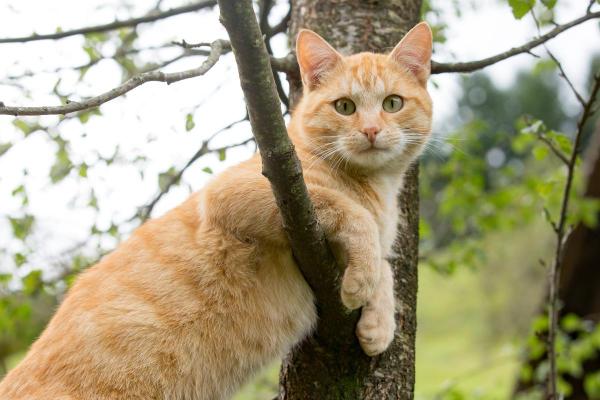
Gray cats
Gray cats, sometimes with a distinctive silvery sheen that earns them the name "blue," often show balanced personalities. In practice, this means cats who appreciate routine and predictability but can adapt to changes introduced gradually.
Gray cats typically approach new situations with thoughtful caution, not necessarily fear, but a preference to observe before participating. This approach extends to their social interactions, making them excellent companions for owners who value a calm, low-drama home.
The subtle difference between blue and gray cats, mainly in undertone and coat texture, might actually reflect slight variations in temperament. True blue cats, with their distinctive silvery sheen, often display more confident and assertive personalities, while standard gray cats may be somewhat more reserved.
Gray cats typically maintain moderate and predictable energy levels, with clear patterns of activity and rest. Rather than the constant playfulness of some other coat colors, gray cats often engage in focused, purposeful activity followed by substantial rest periods. Their play style tends to be strategic rather than chaotic, with many showing persistence with puzzle toys or activities that mimic hunting.
Socially, gray cats often form deep bonds with their primary caregiver while maintaining polite but somewhat reserved relationships with other household members or visitors. They typically integrate well into multi-cat households when proper introductions are made, as they respect feline social boundaries.

Tuxedo cats
Tuxedo cats, easily recognized by their black coats with distinctive white markings on their chest, paws, and sometimes face, have a reputation for charismatic and outgoing personalities. Research from animal behaviorists suggests that tuxedo cats often combine the affectionate nature of black cats with increased confidence and social boldness.
They typically display high intelligence and strong problem-solving skills, with many owners reporting that their tuxedo companions learn to open doors, cabinets, and even refrigerators.
Beyond the classic tuxedo pattern, other combinations of black and white (such as cow patterns and piebald) share some common behavioral traits. Black and white cats typically establish clear boundaries and communicate their preferences directly. Many owners describe their bicolor companions as being expressive, communicative, and engaging with their environment in bold and confident ways.
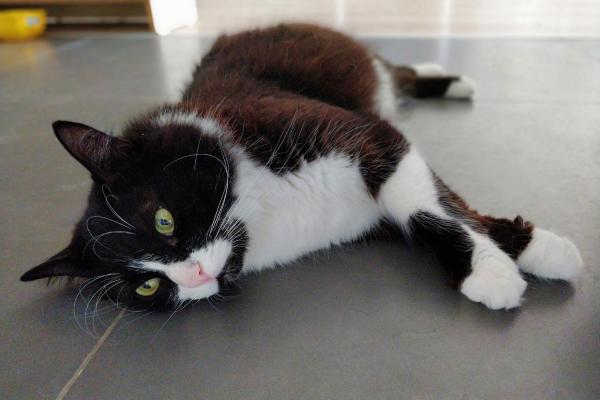
Tabby cats
Tabby cats, easily recognized by their distinctive M-shaped marking on the forehead and their striped, swirled, or spotted patterns, are not a specific color but rather a pattern that can occur with various base colors. These cats typically exhibit confident and well-adjusted personalities, regardless of their underlying color.
Across the different tabby patterns, several personality traits consistently emerge. Tabbies are often described as highly intelligent, curious, and adaptable to new situations. They typically show strong motivation for food, making them responsive to training using positive reinforcement.
Most tabby owners report that their cats are excellent communicators who develop extensive "vocabularies" of sounds for different situations, suggesting strong social intelligence and a capacity for bonding.
Tabby cats typically maintain moderate to high energy levels throughout their lives, with many retaining playful behaviors well into their senior years. Many tabby owners note their cats' impressive athletic abilities, including spectacular jumps and acrobatic feats during play.
Behaviorists suggest that the tabby pattern, which provides excellent camouflage in natural environments, may be linked to heightened predatory behaviors that manifest as playfulness in domestic settings. This energy level makes environmental enrichment particularly important for tabby cats.
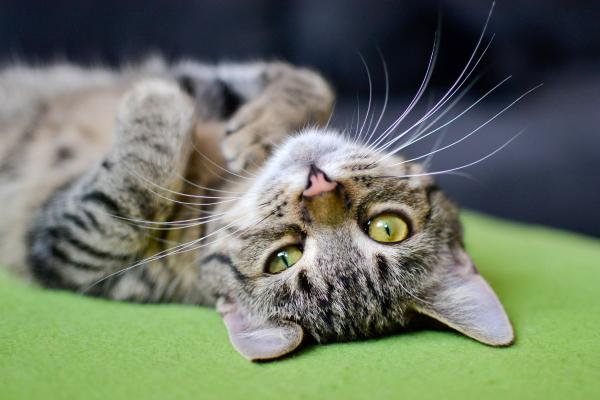
Calico and tortoiseshell cats
Calico cats, with their distinct patches of orange, black, and white, have a reputation for spirited personalities, often called "tortitude." Calicos typically show confidence, determination, and strong opinions about their environment and routine.
The term "tortitude" generally refers to these cats' tendency to be more vocal about their preferences and less tolerant of changes to their established routines. This distinctive personality may be linked to the complex genetics that create their tricolor pattern, which also makes them almost exclusively female.
Tortoiseshell cats, with their mottled black and orange coats, share many personality traits with their calico cousins but often with even more intensity.
Tortoiseshell owners frequently describe their cats as having complex personalities with rapid mood shifts. That is, loving and affectionate one moment, independent and spirited the next. These cats typically form strong bonds with their primary caregiver, but may be selective about when and how they accept affection.
Since over 99.9% of calico cats are female, their behavior patterns often reflect typical female feline traits amplified by the temperament associated with their coloration. Female cats generally establish and defend territories more actively than males, and this territorial awareness is often pronounced in calicos.
They also typically maintain complex social hierarchies in multi-cat households and may be more selective about their interactions with humans.
For more information on the genetic reason behind why those spirited tricolor cats are nearly always female, check out our science-based explanation of feline color inheritance.
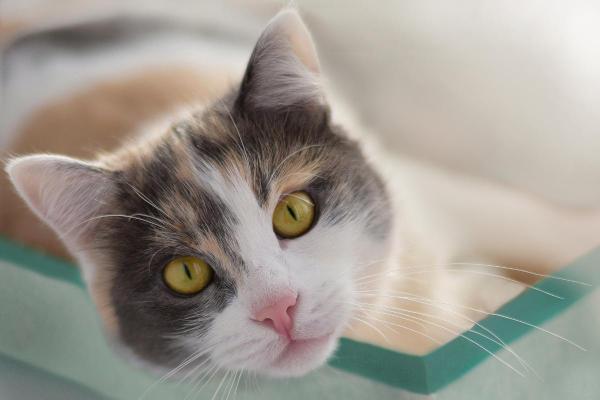
If you want to read similar articles to What Your Cat’s Color Says About Its Personality, we recommend you visit our Comparisons category.
- Stelow, E. A., Bain, M. J., & Kass, P. H. (2016). The Relationship Between Coat Color and Aggressive Behaviors in the Domestic Cat. Journal of Applied Animal Welfare Science, 19(1), 1-15. https://pubmed.ncbi.nlm.nih.gov/26467020/
- González-Ramírez, M. T., & Landero-Hernández, R. (2022). Cat Coat Color, Personality Traits and the Cat-Owner Relationship Scale: A Study with Cat Owners in Mexico. Animals, 12(8), 1030. https://www.ncbi.nlm.nih.gov/pmc/articles/PMC9024431/
- Mears, E. (2024). Cat Color Theory: Can Cat Color Being Accurately Used To Predict Behavior. Honors Theses. Lincoln Memorial University. https://digitalcommons.lmunet.edu/honorstheses/2/
- UC Davis Veterinary Medical Teaching Hospital. (2016). Study on Cat Coat Color and Aggression. Summary article: https://theaggie.org/2016/01/20/uc-davis-study-finds-calico-tortoiseshell-cats-to-be-most-aggressive/



